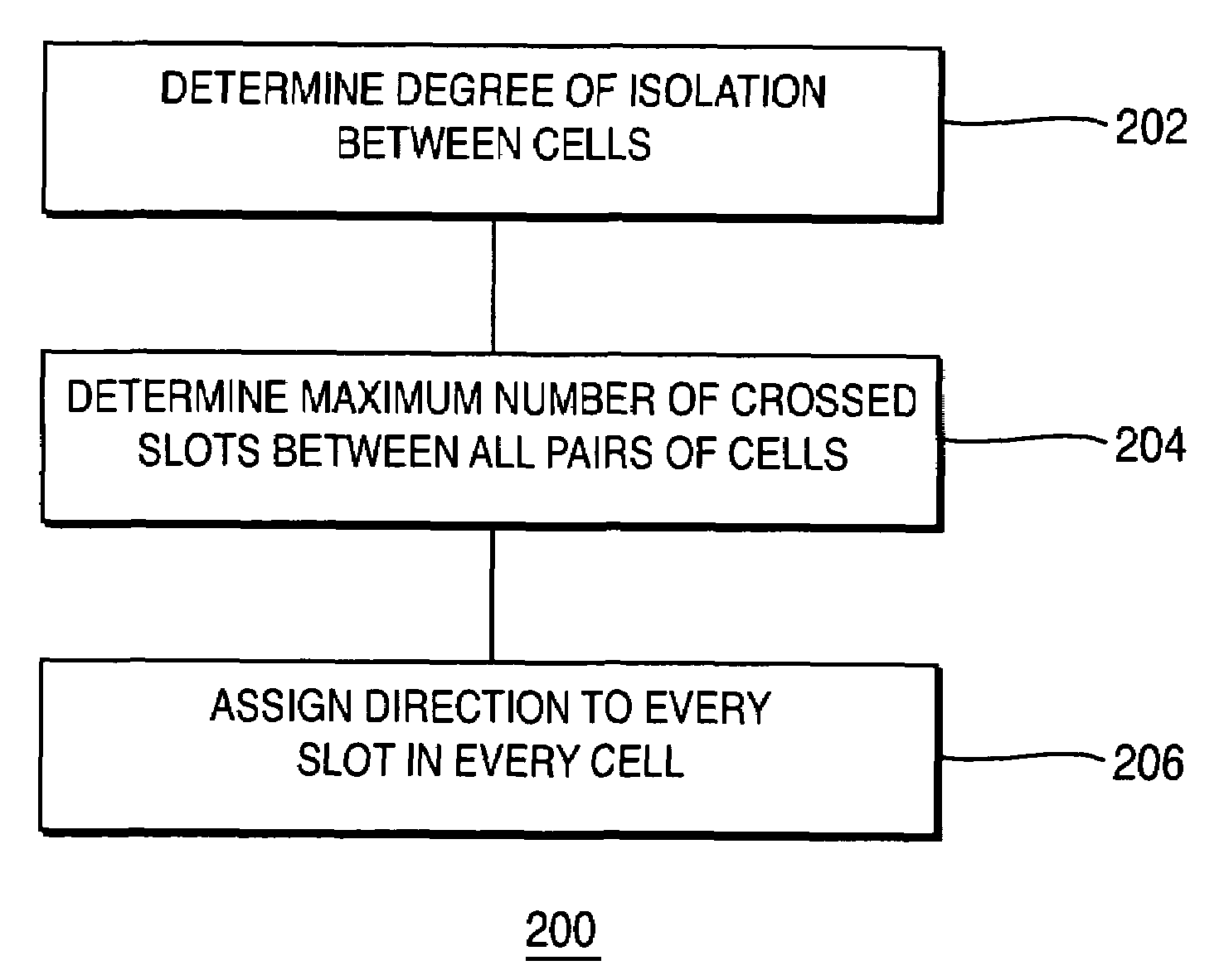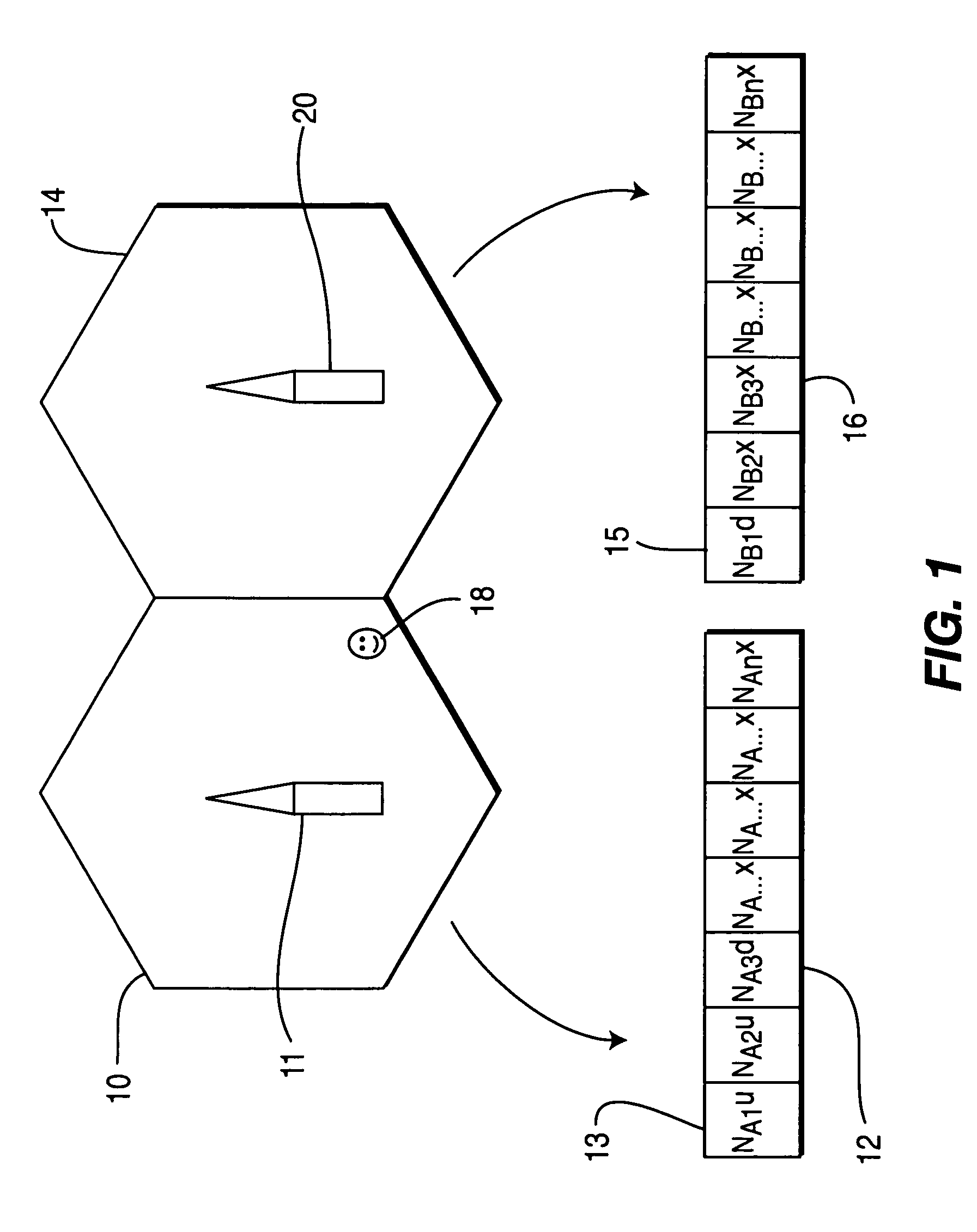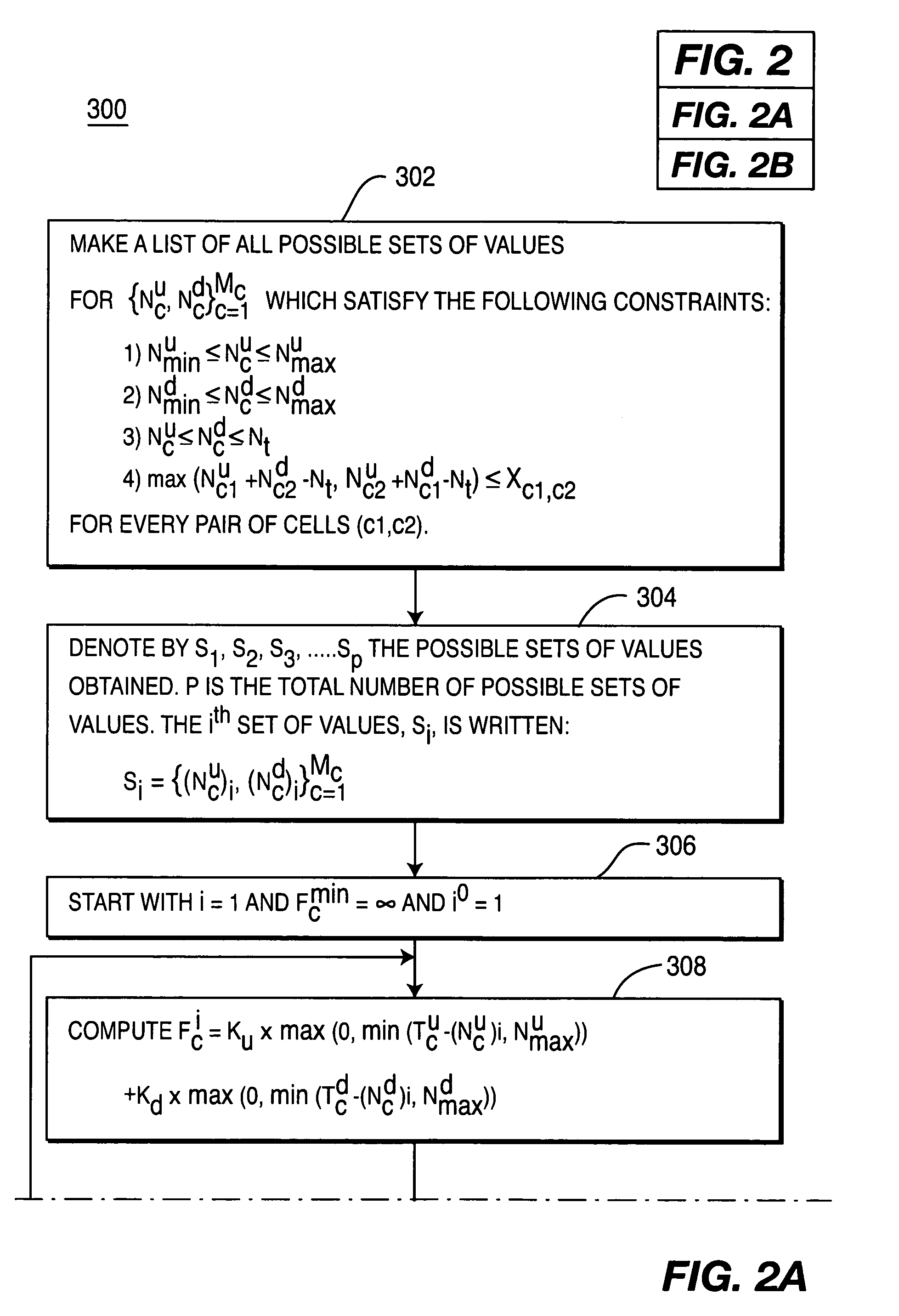Method and system for computing the optimal slot to cell assignment in cellular systems employing time division duplex
- Summary
- Abstract
- Description
- Claims
- Application Information
AI Technical Summary
Benefits of technology
Problems solved by technology
Method used
Image
Examples
Embodiment Construction
[0014]The present invention will be described with reference to the drawing figures wherein like numerals represent like elements throughout.
[0015]The present invention takes into account the following two premises. First, the maximum number of crossed slots between two cells increases when their mutual path loss isolation increases; or conversely, when the isolation decreases the number of crossed slots that can be tolerated decreases. Second, the cost associated with the choice of a particular slot assignment for a cell should be a function of the traffic that cannot be served (i.e. blocked or delayed) due to the choice of slot assignment.
[0016]It should be well understood by those skilled in the art that cells which are more isolated can afford to have a larger number of crossed slots. The term “isolation” is a generic term for the path loss between two base stations as related to base-to-base interference. It may also refer to a metric associated with the distribution of path lo...
PUM
 Login to View More
Login to View More Abstract
Description
Claims
Application Information
 Login to View More
Login to View More - R&D
- Intellectual Property
- Life Sciences
- Materials
- Tech Scout
- Unparalleled Data Quality
- Higher Quality Content
- 60% Fewer Hallucinations
Browse by: Latest US Patents, China's latest patents, Technical Efficacy Thesaurus, Application Domain, Technology Topic, Popular Technical Reports.
© 2025 PatSnap. All rights reserved.Legal|Privacy policy|Modern Slavery Act Transparency Statement|Sitemap|About US| Contact US: help@patsnap.com



